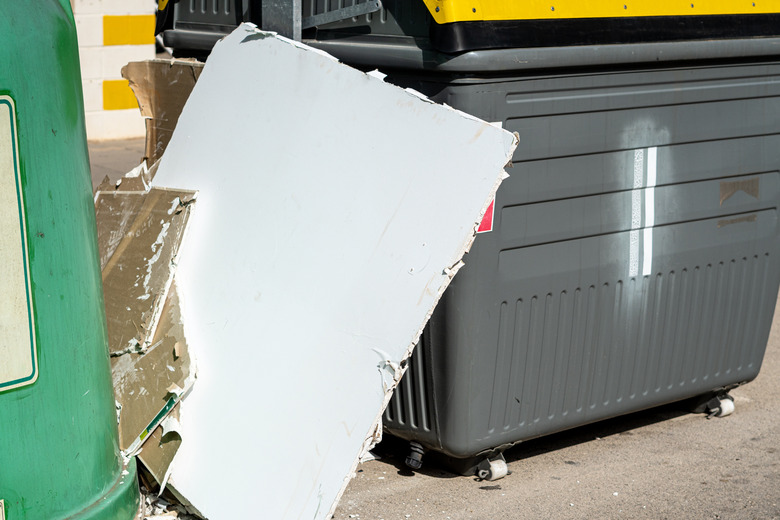How To Dispose Of Sheetrock
We may receive a commission on purchases made from links.
Any home renovation projects that involve modifying walls often result in scrapped or leftover drywall, which is sometimes called Sheetrock, a specific brand of drywall. While it's tempting to just throw old drywall away with the trash, some localities frown on it because in some circumstances, it attracts microorganisms that break it down into stinky, potentially harmful gas during the decomposition process in a landfill. Whenever possible, it's best to keep it out of the landfill and either give it away or offer it up to a special recycling program.
Donate to a Nonprofit Organization
Donate to a Nonprofit Organization
The nonprofit group Habitat for Humanity runs a chain of warehouse-style home improvement stores called Habitat ReStore. These shops are packed full of everything from sofas to construction materials to kitchen sinks. ReStore shops accept all sorts of new and used tools and building materials, and they may accept scrap drywall. They're more likely to take drywall or Sheetrock in full, undamaged sheets, but it's worth calling your nearest ReStore to ask if it will accept smaller pieces.
If there isn't a Habitat ReStore shop in your area, search for another nonprofit that accepts building supplies. For instance, Stardust, an Arizona nonprofit, has a couple of locations quite similar to a Habitat ReStore shop. Stardust accepts drywall in half-sheet or larger sizes.
Offer It Through Buy Nothing Groups
Offer It Through Buy Nothing Groups
Phone apps and social media sites are home to localized Buy Nothing groups participating in the Buy Nothing Project. Buy Nothing groups allow anyone to give away virtually anything to others living within a few miles. Many home improvement projects require just a few scraps of drywall, so your local Buy Nothing group is a great place to offer up smaller pieces left over from recent projects.
Facebook Buy Nothing groups are particularly active, so if you use this social media platform, search for one in your town. Once an administrator allows you to join, post an image or information about your scrap drywall. Other people state their interest, and once you pick a recipient, message the person with your address and they'll pick it up from your porch or other outdoor area. There's no need to be home unless you choose to help the recipient load the drywall into a vehicle.
If you can't find a Buy Nothing group nearby, offer usable drywall through your local social media marketplace or a freecycle page, or you can even post it on a local yard sale site, mentioning that it's free. These options are best if you have more than a few small pieces left over.
Discard When Necessary
Discard When Necessary
If your drywall is grimy, damaged, or can't be given away for whatever reason, check your local trash pickup's information page to determine whether it will accept drywall and in what form. For instance, some locales may request that all used building materials be left out unbagged for bulk pickup, while others may want them bagged like trash.
The powdery inner part of drywall is made of gypsum, a naturally occurring mineral that benefits soil. Also known as calcium sulfate, gypsum contains calcium and sulfur. It improves soil aeration and boosts positive conditions for plant roots. Drywall-sourced gypsum is used on some farms as a substitute for agricultural gypsum as well.
To use it in your own yard, garden, or compost pile, peel off the backing paper and then crumble the drywall. Wear a dust mask while doing so to avoid breathing in fine particles. Sprinkle the gypsum over the soil, till it into the soil, or mix it into a compost pile in moderation. Only use plain drywall, not any that's been treated for fire or water resistance or that has been contaminated with any sort of chemicals.
